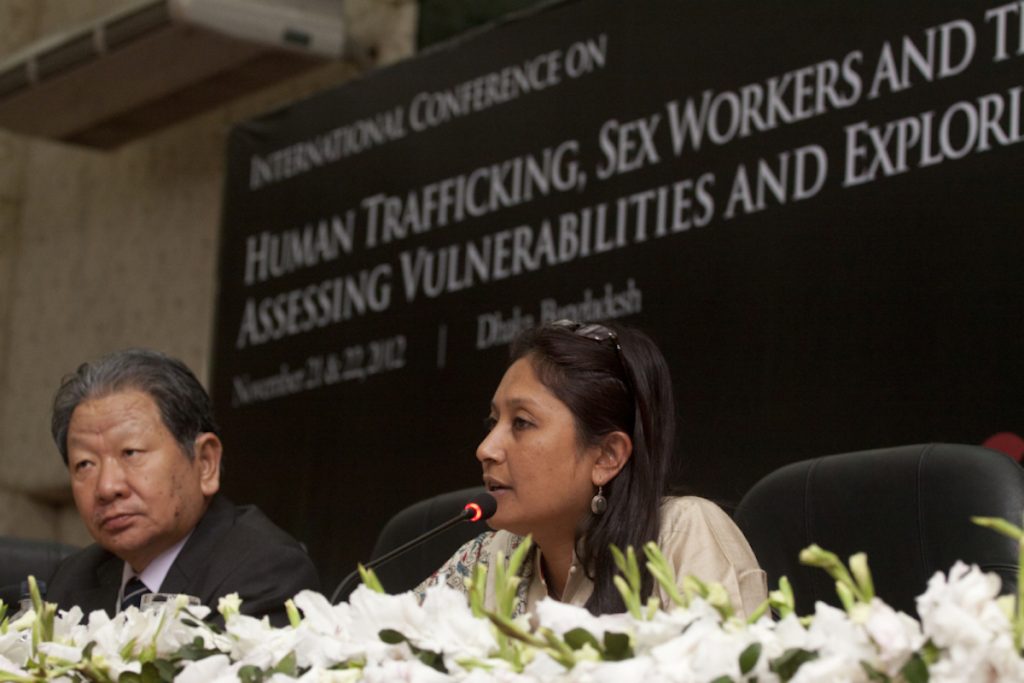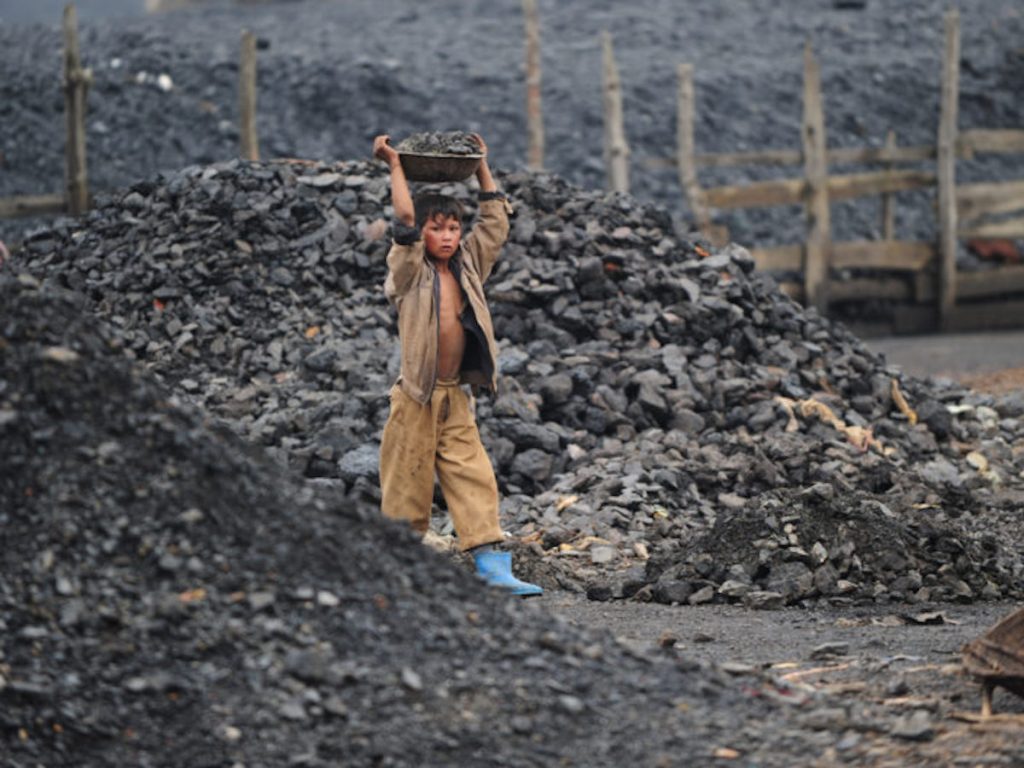Rosalin Nazary* was promised a luxurious life in the central city of Mumbai by her lover. Nazary, who had never stepped out of the eastern state of Assam, was overjoyed at the prospect.
The lure of the big city of film stars she had heard of was too enticing. The young woman could not wait to get there. Her boyfriend, who called himself Rohit Mehra, bought her gifts and Nazary thought he would make a dream husband. She agreed to elope with him.
Instead of Mumbai, he took her to Delhi, the national capital, where he and an accomplice raped her. When she objected Mehra told her from now on this was going to be her life. She was to be sold to a brothel. Nazary’s world crashed in front of her eyes and she did not know what to do.
Luckily for her when the two men went out, Nazary escaped. She met a couple on a busy street who took pity and helped her. They put her on a train to Assam from where she reached her home after three days.
Modus operandi
To befriend unsuspecting girls and young women and traffic them to be forced into prostitution or sold as a bride in the northern states of Punjab, Haryana or Rajasthan is the modus operandi of traffickers. These states have a skewed sex ratio; with not enough girls for men to find a partner, said Sister Prema Chowallur, the vice president of AMRAT Talitha Kum India one of the largest networks of women religious from 76 congregations engaged in anti-human trafficking activities.
In 2013, a study that included 10,000 households across 92 villages showed that about 9,000 women from different states we sold into forced marriages.
In many cases, girls and young women are often tricked, abducted or coerced into marrying much older men, widowers or alcoholics, said Digambar Narzary, founder chairperson of Nedan Foundation, an anti-trafficking NGO, in Kokrajhar in the eastern state of Assam.
Traffickers prey on vulnerable poor people. The northeast of India is least developed and means of livelihood are scarce in this flood-prone region, Narzary said.
Sister Chowallur said mostly women and children are trafficked from Assam on the lure of a better life and taken to Arunachal Pradesh and Nagaland as domestic workers.
Hasina Kharbhih, founder of anti-trafficking Impulse NGO Network (INGON) in Shillong, said some are trafficked further to the Gulf and other countries via Myanmar to be pushed into flesh trade or forced marriages.
As the northeast shares porous international borders with countries like China, Bangladesh, Myanmar, Nepal and Bhutan, it invariably becomes a source, transit and destination point,
“These points provide an easy passage in and out of India for organized human trafficking syndicates to operate undetected,” Kharbhih said.

Since 2015, there has been a rise in the number of girls and young women trafficked from the northeast and northern part of West Bengal to the Middle East and Southeast Asia, Kharbhih said.
Between 2011 to 2019, 38,508 trafficking cases were reported in India, according to the National Crime Records Bureau (NCRB).
Besides sex trafficking, India is also riddled with the problem of organ trafficking. In 2007, the World Health Organisation described India as a “known organ-exporting country” despite the Human Organ Transplantation Act of 1994 banning organ trade.
According to NCRB data in 2019, Mumbai and Kolkata had the highest cases of trafficking in women and children, mainly for forced marriage, child labour, domestic help and sexual exploitation.
“We rescued 27 trafficked people, including minors and women, during lockdown period and after between March and July,” said Sister Chowallur who is from the Sisters of the Cross of Chavanod.
Father Tom Mangattuthazhe, who also works in association with Sister Chowallur and other NGOs, said: “What got me into this was the news that 28 people who had migrated from the region had committed suicide in various parts of the country where they were working following the sudden lockdown and loss of a job.”
There is an ecumenical Christian organization — United Christian Forum North East India (UCFNEI) — that combats human trafficking in the region, said Father Mangattuthazhe, who is the Northeast India Regional Bishops’ Council Secretary for Ecumenism.
The Global Slavery Index estimates that on any given day in 2016 there were nearly 8 million people living in “modern slavery” in India.
Children are bought or kidnapped and well-fed until they become a teenager and they are then sold as bonded labourers, domestic workers or into the flesh trade, said Sister Chowallur who networks with other anti-human trafficking NGOs in the area.
Rat-hole mining
Kharbhih said there used to be an acute demand for young children for coal mining in Meghalaya’s Jaintia Hills. She said that across coal mines of the Jaintia Hills, contractors would employ children as young as six years in the harmful practice of rat-hole mining.
The passages in these mines was so narrow and tunnel-like that only a little child could manoeuvre it and extract coal. Around 70,000 children, between six and 16 years of age, from Bangladesh, Nepal and Meghalaya’s villages were at one stage believed to have been engaged in this dangerous enterprise.
Families were promised lucrative salaries in exchange for their children’s work, but they had no idea of the dangerous conditions they were made to work in. Children have died in these rat holes and their bodies were not recovered.
Kharbhih, who has won many awards for fighting human trafficking, said one of her major successes was in getting a banning order from the government on rat-hole mining in Meghalaya state.

Magnitude of trafficking
Kharbhih began working in the northeast city of Shillong in 1987, organising sustainable livelihood initiatives for women but was flooded with complaints of children going missing.
“It was only then that I realised the magnitude of the trafficking problem,” Kharbhih said. “So we started the Impulse model that brings together the state government, security agencies, legal groups, media and citizen organisations to combat trafficking by pooling knowledge and data.”
To date, her NGO has supported over 73,127 trafficking survivors by reporting suspected cases to the authorities, facilitating their rescue and reintegration into society and helping survivors seek legal recourse and compensation.
Despite suffering physical attacks and having her office ransacked in 2009, Kharbhih has remained undeterred in her battle against human trafficking.
“To address human trafficking in a major way, we have to give importance to home-based production and economic independence of women,” she said. “If women have the power to choose, they can nip unsafe migration in the bud and consequently human trafficking.”
Digambar Nazary said now there is an anti-human trafficking unit in almost every district, if there is a political will, then the menace could be eliminated in a year.
*Pseudonym used for privacy reasons.






